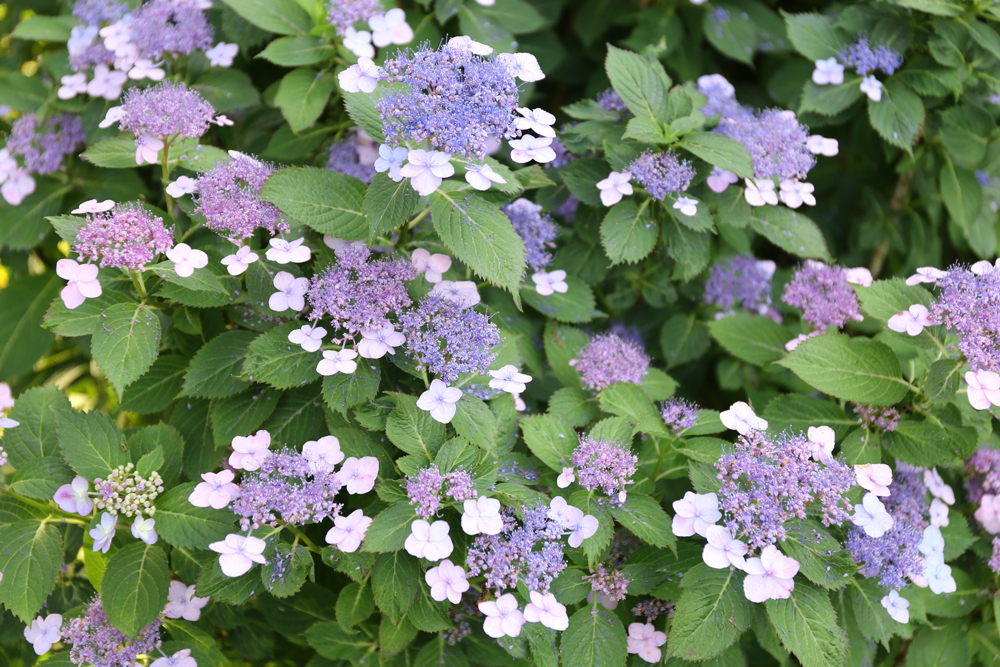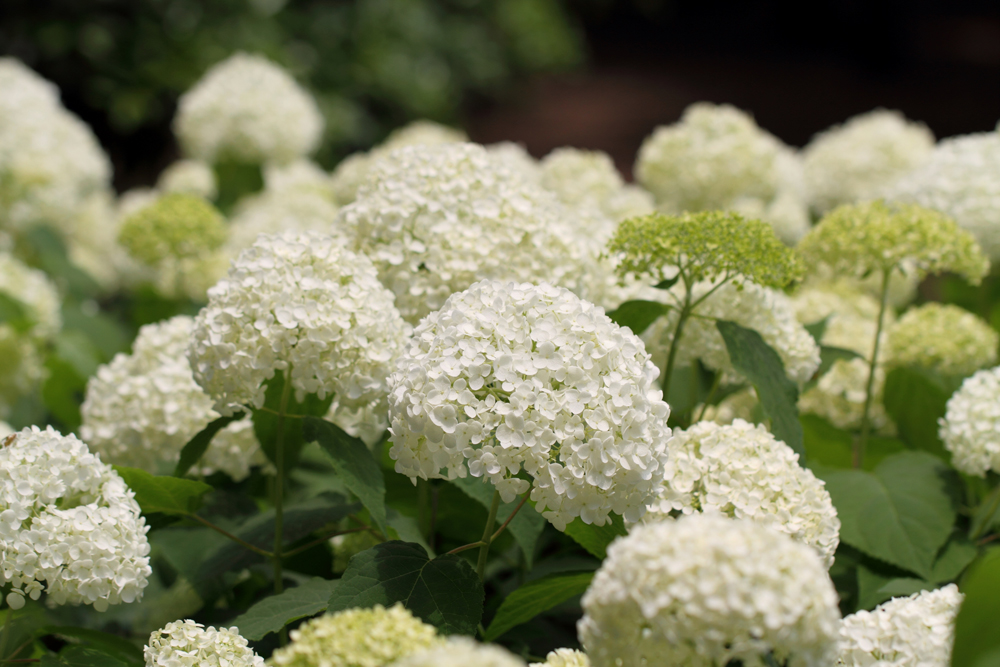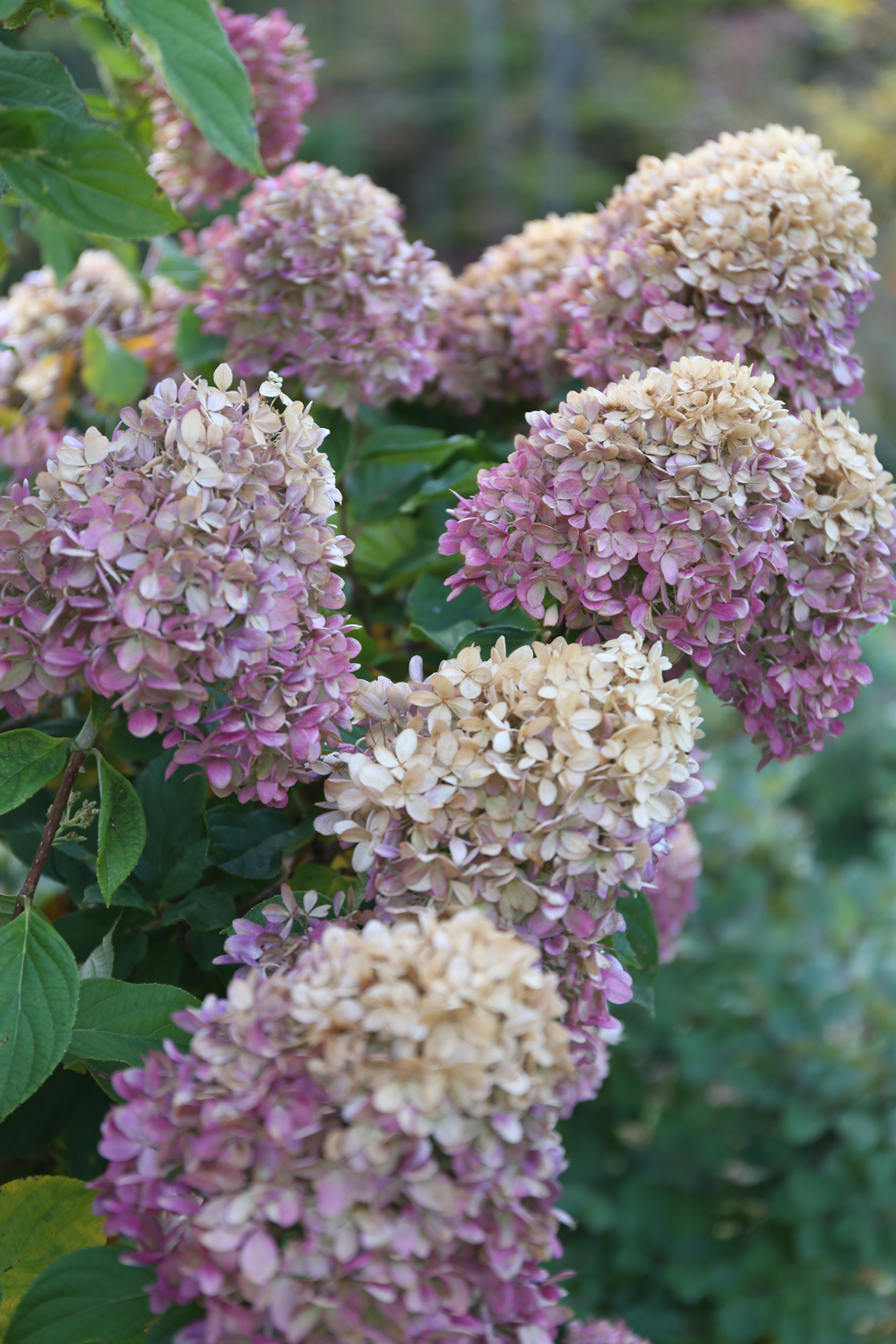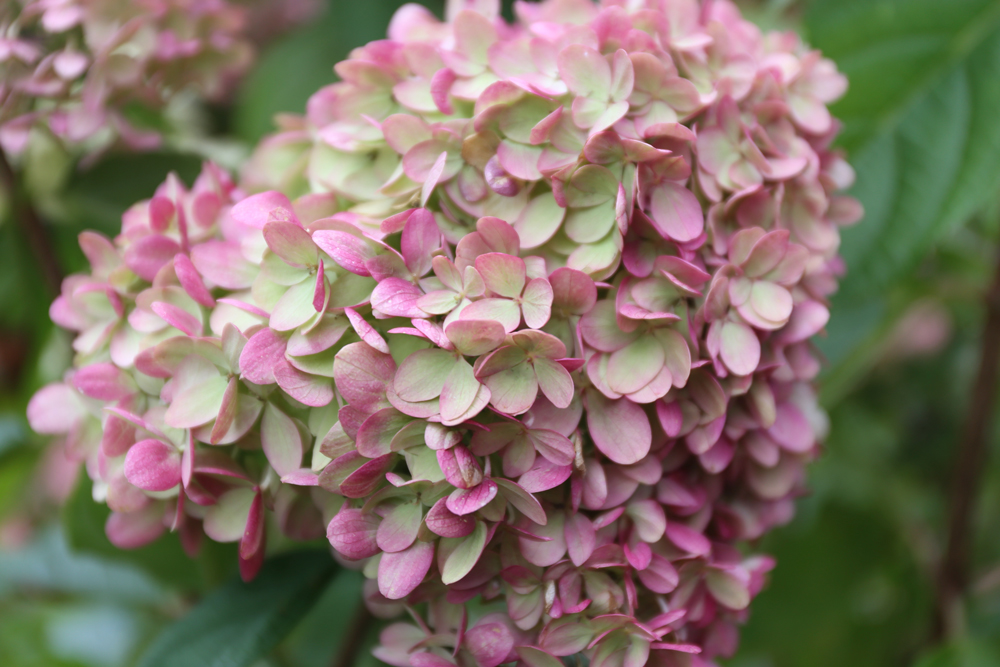Your Guide to Planning, Planting, and Growing Hydrangeas
The genus Hydrangea includes 23 species of flowering shrubs, trees, and vines. Thanks to plant breeders, there are now hundreds of named cultivars to choose from. This means you can find a hydrangea that's suitable for nearly any yard or garden.

Plan for Success
Sun and Shade. Most hydrangeas will grow in sun or partial shade, though some types prefer more sun and others perform best in light shade.
Hardiness Zone. Some types of hydrangeas bloom on “old wood”. This means they form the next year’s flower buds in the fall. If cold winter temperatures kill these buds, there may be no flowers the following summer. Other hydrangeas bloom on “new wood”, which are current year stems. These plants can tolerate colder temperatures and still produce flowers. When selecting hydrangeas, pay special attention to hardiness to be sure you get a good show of flowers. Find your hardiness zone HERE.
When to Plant. Bare root hydrangeas should be planted in very early spring. Hydrangeas purchased in containers may be planted in spring, summer or fall.

How to Plant Hydrangeas
Loosen the soil to a depth of at least 12” and mix in several handfuls of compost and ½ cup of all-purpose granular fertilizer (follow package directions).
Put the plant in the hole so the crown (where the roots meet the stem) is at the soil line.
Cover the roots with soil. Water slowly and deeply to make sure the roots are in good contact with the surrounding soil.

Where to Plant Hydrangeas
Consider the mature size of the hydrangea you are planting and give it enough space to reach its full potential. Note the plant’s preferred sun exposure and find a place where it will get the right amount of light. Most hydrangeas prefer some protection from hot afternoon sun. Hydrangeas also need well drained soil and consistent moisture.
Hydrangeas may be planted almost anywhere around your home. Depending on the plant’s mature size, you can use them to create a backdrop for a perennial garden, visually anchor your home in the landscape, beautify an outbuilding, create a hedge, or add variety to a mixed shrub planting.

What to Expect
Most trees, shrubs, and perennial vines need a full growing season to settle in and establish a strong root system. During this time, it is important to water deeply (enough to reach the root zone) once per week unless natural rainfall is adequate. Mulching the surface of the soil around the plant with shredded bark or shredded leaves will help keep the roots moist and minimize weed growth.
In the second year, the plant will begin to grow more vigorously. It can also go for longer periods without water, though this depends on your climate and growing conditions. Flowering may not begin until the third year, and you can expect it to increase as the plant matures.

The flowers of most panicled hydrangeas (Hydrangea paniculata) start out green and gradually change to white or cream. Some turn pink in late summer as the weather cools. Mophead and lacecap hydrangeas (Hydrangea macrophylla and Hydrangea serrata) can have flowers that are blue, pink, burgundy or purple, depending on the cultivar.
With some types of mophead and lacecap hydrangeas, the pH of the soil affects the color of the flowers. Colors tend to be pink in alkaline soils and blue in acidic soils. Gardeners can also influence the color of the flowers by adjusting the soil pH in one direction or another. Adjusting the pH should be done in late autumn or early spring. The easiest way to lower the pH is to use an acidifying fertilizer. To raise the pH, apply crushed limestone. Be careful not to overdo it. A pH level that is too high or too low can harm the plant.

How to Care for Hydrangeas
Pruning and care varies, depending on the type of hydrangea you are growing. Pruning is done to control the shape of the plant, cut away aging or damaged branches, and to remove spent flower heads.
Smooth hydrangea (Hydrangea arborescent ‘Annabelle’) blooms on new wood and the plant can be pruned to the ground in late winter. Alternatively, you can simply remove any weak, or broken branches in early spring to revitalize growth.
Panicle hydrangeas (Hydrangea paniculata) mophead and lacecap hydrangeas (Hydrangea macrophylla), and oakleaf hydrangeas (Hydrangea quercifolia) should all be pruned in late winter or early spring. While it’s not necessary to remove the spent flowerheads, this may be done any time after the flowers fade. Many gardeners like to leave the flowers in place for winter interest and remove them in early spring.
Tree form hydrangeas usually require very little pruning. Follow the instructions above if you want to prune to control size and shape.
